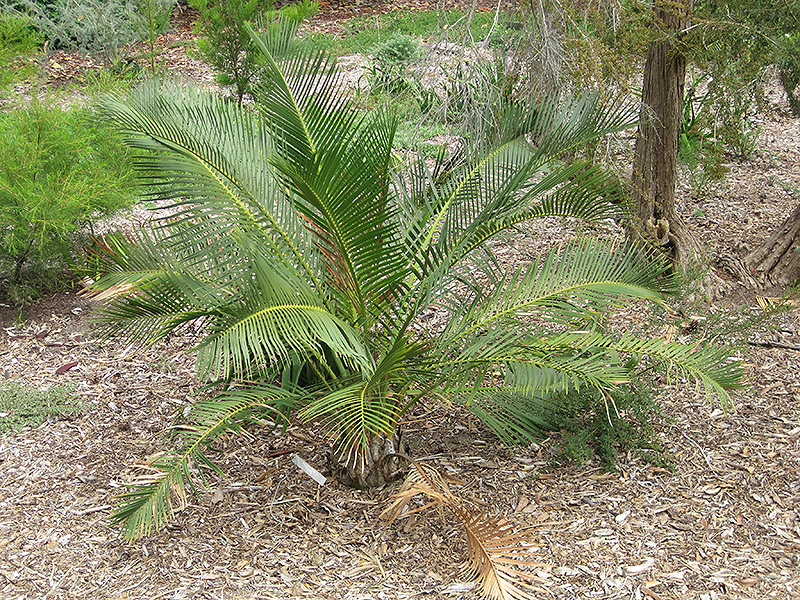Height: 6 feet
Spread: 10 feet
Sunlight:
![]()
![]()
Hardiness Zone: 9a
Other Names: Zamia Palm
Description:
A small cycad with a thick trunk that is mostly underground; long, arching, blue-green leaves are graceful in form and texture; likes hot, dry summers and cool, wet winters; tolerates light frost and coastal conditions
Ornamental Features
Zamia is primarily valued in the landscape or garden for its ornamental globe-shaped form. It has attractive bluish-green evergreen foliage. The glossy narrow pinnately compound leaves are highly ornamental and remain bluish-green throughout the winter. The buttery yellow fruits are held in cones from early summer to early fall.
Landscape Attributes
Zamia is a multi-stemmed evergreen tropical plant with a more or less rounded form. It lends an extremely fine and delicate texture to the landscape composition which can make it a great accent feature on this basis alone.
This tropical plant will require occasional maintenance and upkeep, and should not require much pruning, except when necessary, such as to remove dieback. It is a good choice for attracting bees and butterflies to your yard, but is not particularly attractive to deer who tend to leave it alone in favor of tastier treats. It has no significant negative characteristics.
Zamia is recommended for the following landscape applications;
- Accent
- Rock/Alpine Gardens
- General Garden Use
Planting & Growing
Zamia will grow to be about 6 feet tall at maturity, with a spread of 10 feet. It has a low canopy, and is suitable for planting under power lines. It grows at a slow rate, and under ideal conditions can be expected to live to a ripe old age of 120 years or more; think of this as a heritage tropical plant for future generations! This is a dioecious species, meaning that individual plants are either male or female. Only the females will produce fruit, and a male variety of the same species is required nearby as a pollinator.
This tropical plant does best in full sun to partial shade. It is very adaptable to both dry and moist growing conditions, but will not tolerate any standing water. It is considered to be drought-tolerant, and thus makes an ideal choice for xeriscaping or the moisture-conserving landscape. It is not particular as to soil pH, but grows best in sandy soils. It is somewhat tolerant of urban pollution. This species is not originally from North America, and parts of it are known to be toxic to humans and animals, so care should be exercised in planting it around children and pets.
